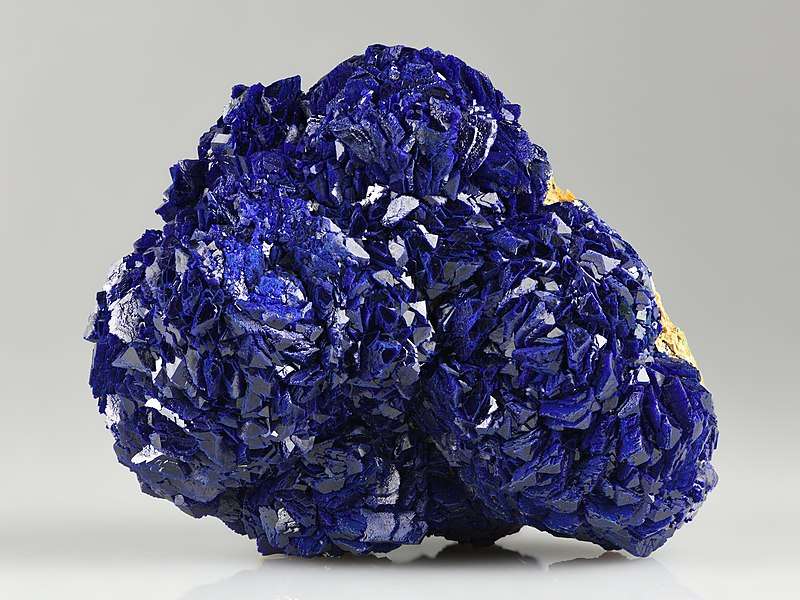
Appearance
The chemical formula for the copper carbonate mineral azurite is Cu3(CO3)2(OH)2. Although large or granular forms can also occur, monoclinic prismatic crystals are the most common form. The rich azure-blue hue of the mineral, which is highly valued for its aesthetic value, gives rise to its name.
Geographical Distribution
There are numerous places to find excellent specimens. The best examples can be seen in Bisbee, Arizona, and the surrounding areas. Tsumeb, Namibia is home to the best crystals, which can reach lengths of up to 10 inches (250 mm). There have also been reported cases in Utah, Mexico, Sardinia, the Ural and Altai Mountains, Wallaroo, Brazil, South Australia, and Broken Hill.
History
The ancient world before the classical era was aware of azurite. It came from mines in Sinai and was used as a pigment in ancient Egypt. It is said to have been ground using a unique mortar and pestle by ancient Mesopotamian authors. It was also utilized in classical Greece, as seen on the Athens Acropolis. Roman writers were undoubtedly aware of its use as a pigment, even if it does not seem to have been utilized in ancient Roman wall paintings. Glass and azurite fusing was invented in prehistoric Mesopotamia.
Metaphysical Properties
Sometimes referred to as a “stone of heaven,” azurite is said to offer insight into all facets of life, encourage intuition, inspire creativity, remove obstacles, and soften stern intellectualism with compassion and love.

Chemical Composition
Cu3(CO3)2(OH)2 is the chemical formula for azurite. It is made up of copper (Cu), carbon (C), oxygen (O), and hydrogen (H) atoms, according to this statement.
Uses
- Pigments: Because azurite becomes unstable in air, it is not a good pigment. But in antiquity, it was employed as a blue pigment. In Egypt’s Eastern Desert and Sinai, azurite is a naturally occurring mineral.
- Jewelry: It is occasionally used as a decorative stone, as well as beads and jewelry. But such uses are limited by its softness and propensity to lose its rich blue color as it weathers. Since azurite is quickly destroyed by heat, mounting azurite specimens must always be done at room temperature.
- Collecting: Because of its striking hue, azurite is a well-liked stone among collectors. But over time, heat, bright light, and open air all tend to lessen the intensity of its color. Collectors should store pure azurite specimens in a sealed, cold, dark environment that closely resembles their original natural location in order to help preserve the rich blue color of the stone.
- Prospecting: Even though azurite isn’t a large copper resource per se, its presence on the surface can be interpreted as the existence of weathered copper sulfide ores. It typically occurs in close proximity to the chemically very similar malachite, resulting in a vividly colored mix of bright green and deep blue that is very suggestive of the presence of copper ores.
Table





